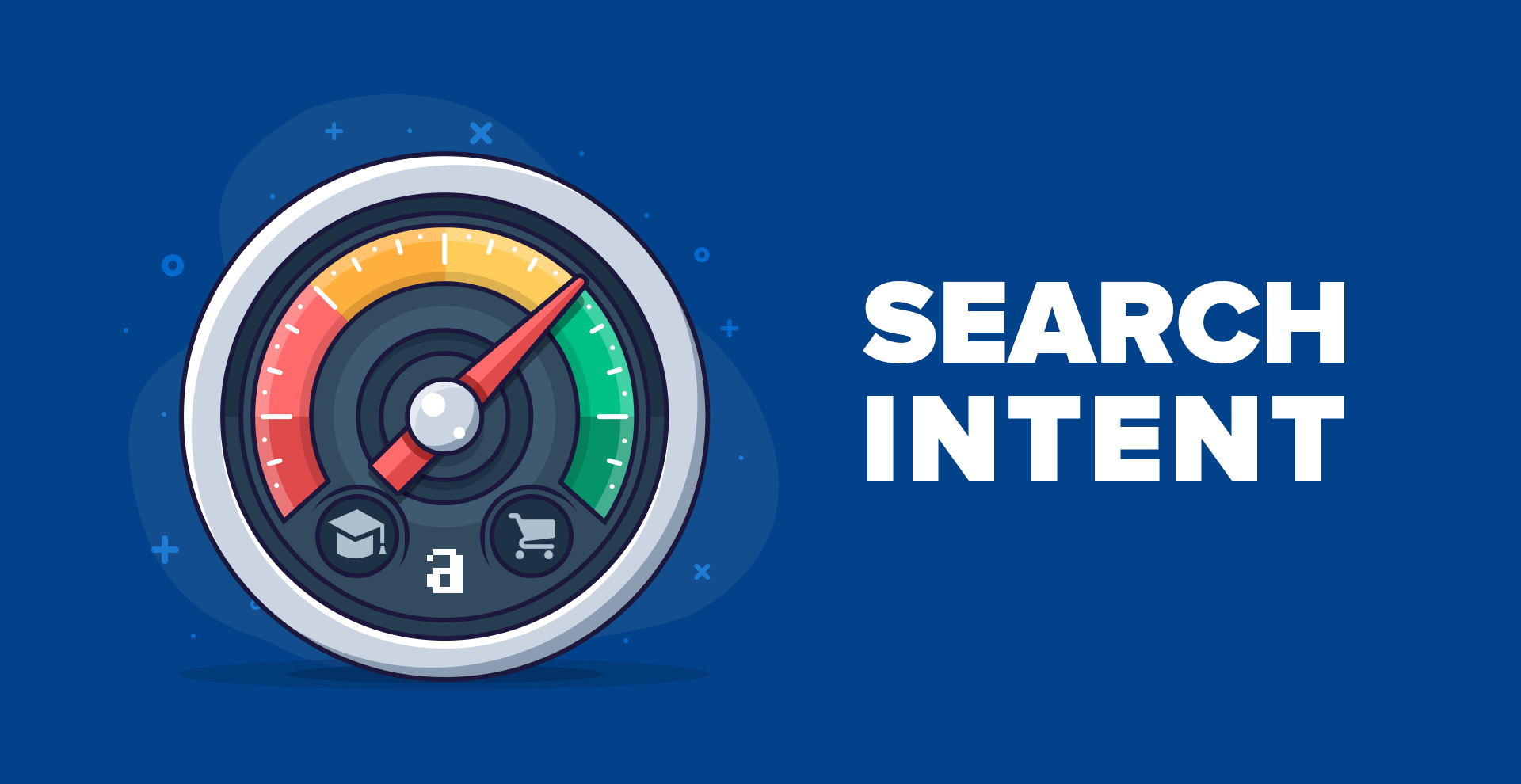Hello!
Marketers who know how to match content with search intent acquire more leads. This is because every search is a Q and A session, where accuracy and relevance count and can win you new accounts.
Daily, over 2 million new blog posts are published via WordPress, and 3.5 billion Google searches performed. Through machine learning, search engines recognize and return only the most relevant results.
One of those relevant results could be your blog post, assuming it's optimized with user intent in mind.
And speaking of relevance here’s what irrelevant content does: it gives searchers the runaround.
Why Businesses Should Implement a Remote Work Policy
This results in frustration, low click-through rates, low dwell time, high bounce rates, and search abandonment. These user signals send a signal to Google that your content is irrelevant and should be deranked.
In this post, I’ll highlight what is search, the search user journey map, search intent, types of search intent, search intent and relevance, then show you in ten practical steps how to match content with search intent, but first, let’s see:
Search as a Journey
We like to think of search as a journey from a question to an answer via a search engine.
And here’s what l call
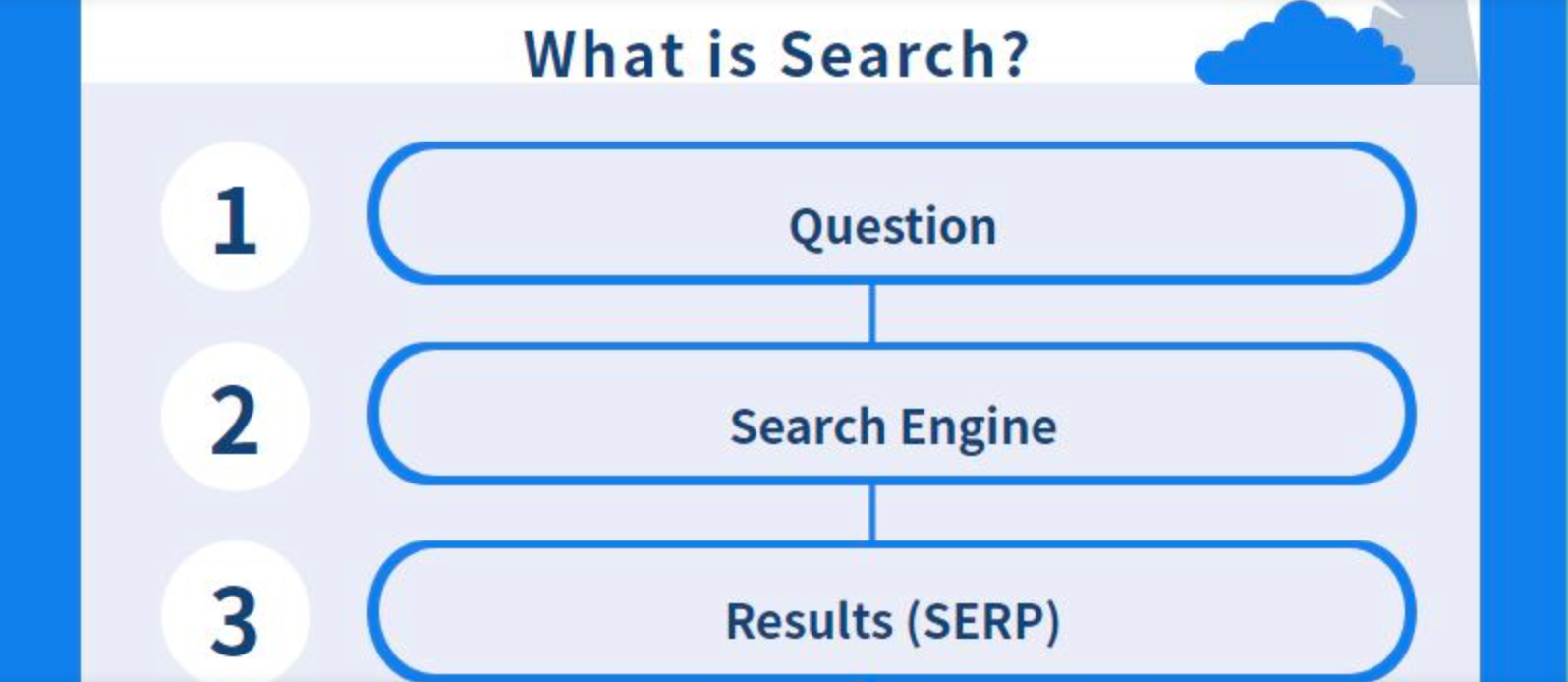
The Search User Journey Map
The search user journey map details every step a searcher takes to perform a search from ideation to execution.
1. Ideation Stage:
This is a pre-search phase where an idea hits. It could be a problem, a hint from a book, news report, press release, an aha moment, or just a random thought.
2. Phrasing Stage
 Here, the idea is phrased into a question or query using matching keywords. It is also a pre-search phase. The ideation and phrasing stages detail what searchers have in mind.
Here, the idea is phrased into a question or query using matching keywords. It is also a pre-search phase. The ideation and phrasing stages detail what searchers have in mind.
3. Execution Stage
Here users type and enter or voice their search query.
This stage covers what searchers type into Google search bar or what they voice into Google Voice Assistant.
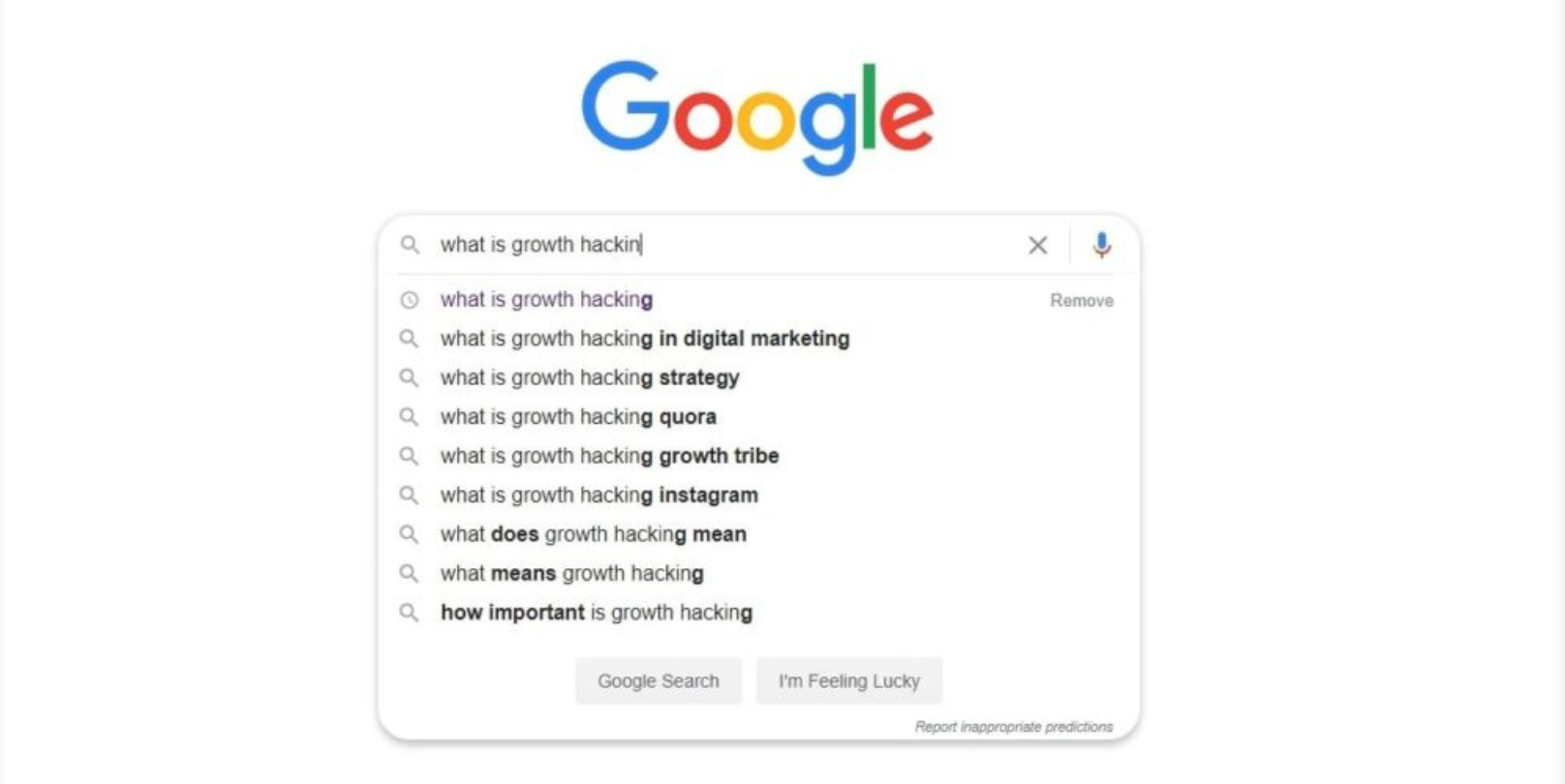
4. Result Stage
This is the search completion stage where the search result is presented as SERP.
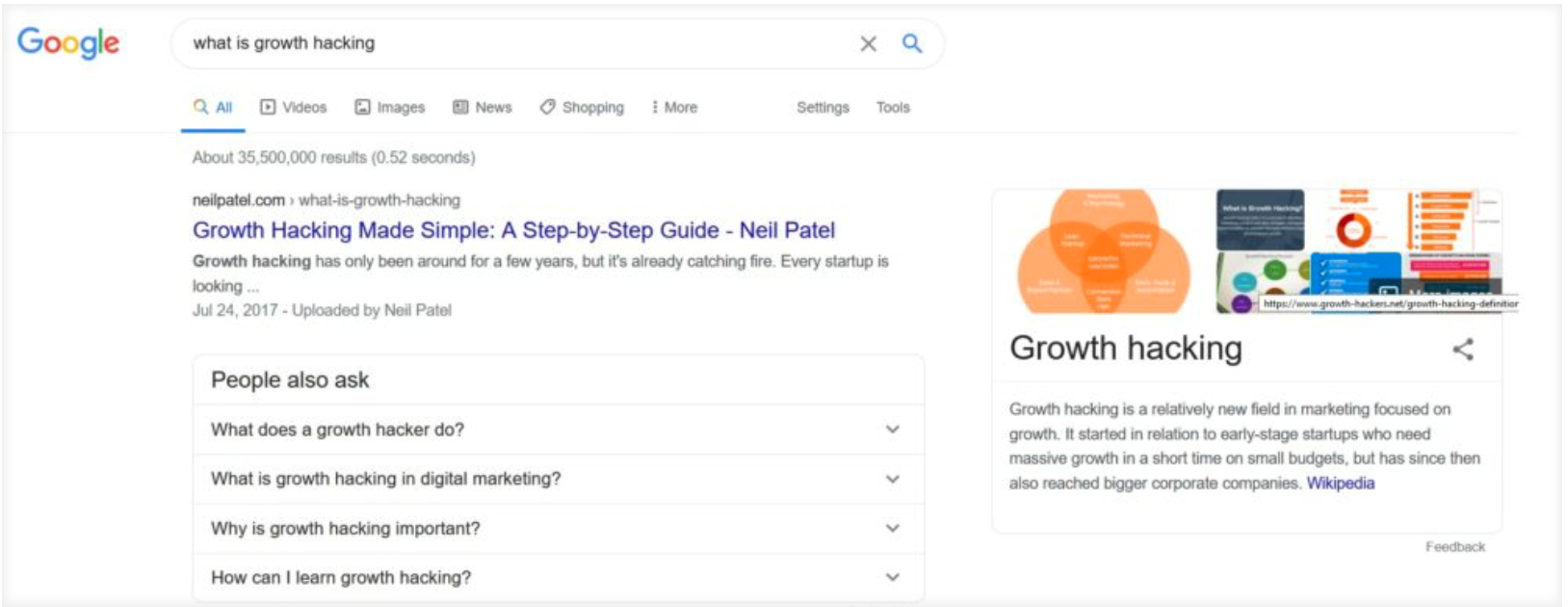
Mastering all four touchpoints of the search user journey map is essential to learning how to match content with search intent.
Which brings us to the question:
What is Search Intent?
 Before each search journey, users have an intent, a motive, a reason, or a goal in mind.
Before each search journey, users have an intent, a motive, a reason, or a goal in mind.
We define search intent as what users have in mind, type, and hope to find, before, during, and after conducting a search.
The following are:
Types of Search Intent
Search intent can be informational, navigational, commercial, or transactional in nature.
1. Informational Intent
Here customers perform a search to gather information e.g. what is CRM software? It could be a startup in the process of adopting CRM software or an intern writing a paper about CRMs.
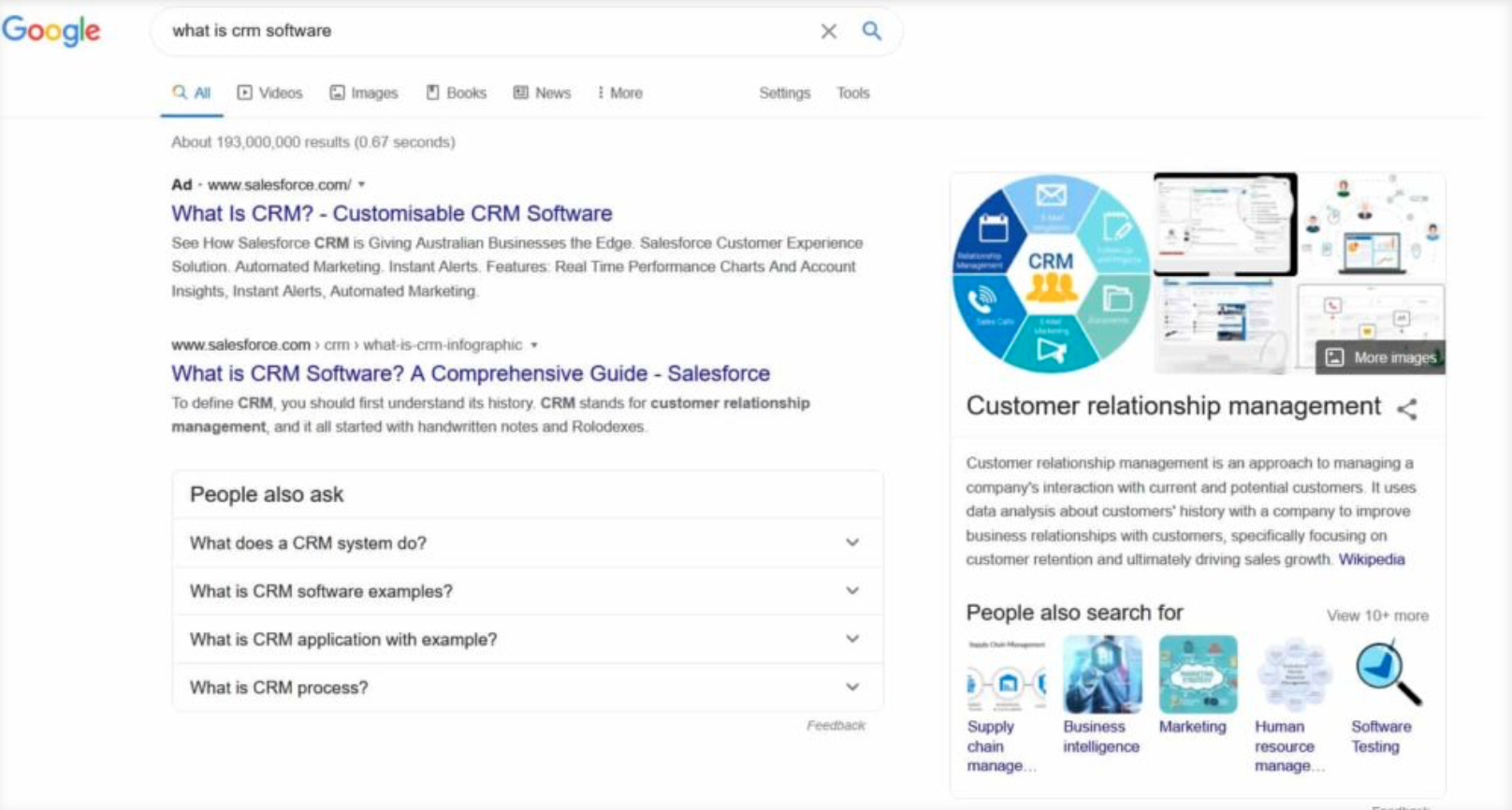
On closer observation, you’d notice there are zero ads. Most of the results are blog posts and videos providing more information about CRM software and the best CRM software. In fact, the featured snippet result is a Wikipedia article.
2. Navigational Intent
Here customers search for a specific website or web page. They could search via search engines or directly on your website’s internal search engine. For instance, a customer who is already aware of Salesforce can look them up on Google or navigate straight to their products page to view their offers.
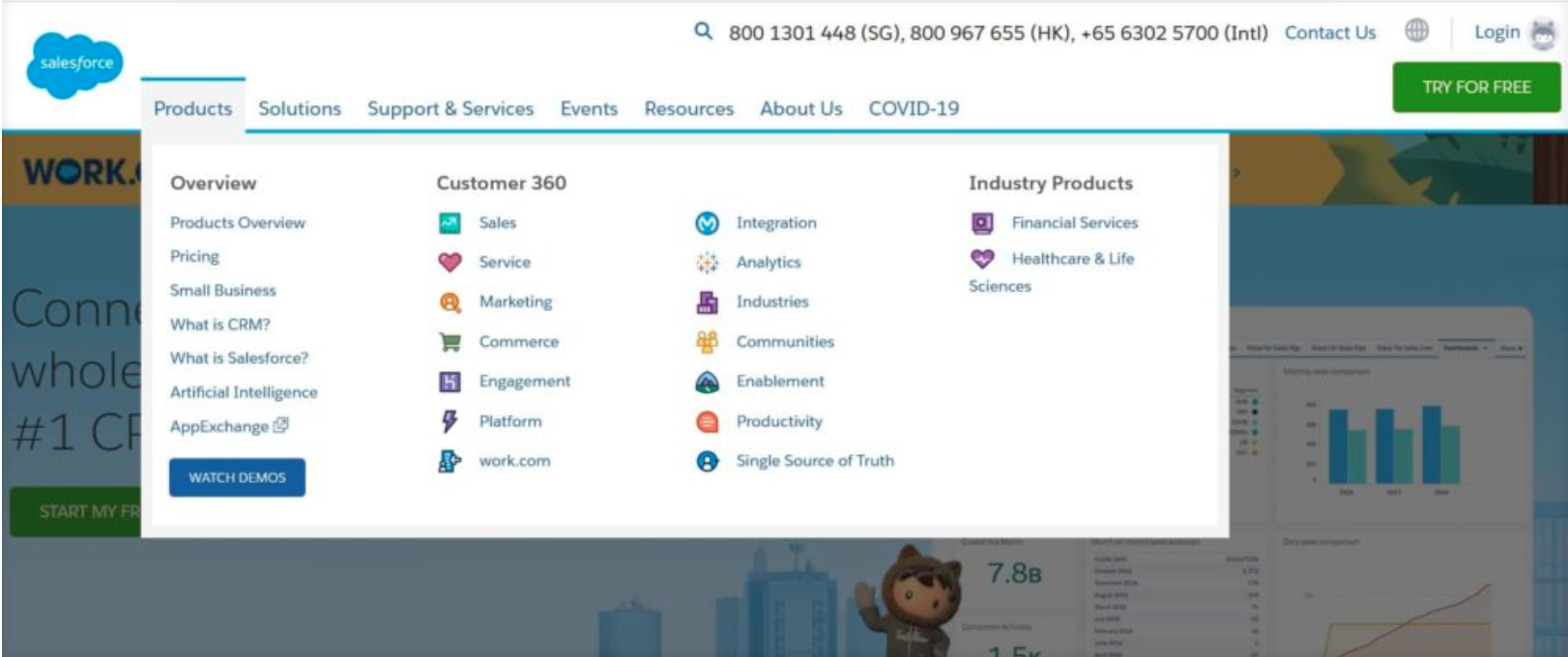
At this stage, brand awareness exists. Such searchers can quickly transform to leads with the right content or landing pages.
3. Commercial Intent
Most searchers with a commercial intent want to buy, but later. They may be comparing CRMs with search terms like Salesforce vs. Freshsales. They want to know why they should pick one over the other considering factors like pricing, features, support, etc.
Such search results often turn up comparison blog posts and software/product reviews.
4. Transactional Intent
 Searchers with a transactional intent are in buy mode.
Searchers with a transactional intent are in buy mode.
They go straight to product pages or type queries like buy, try, sign up, discount, sales, etc. Some may even search for specific product SKUs.
In learning how to match content with search intent, two things must be taken into account, the search user journey map, and search intent. This creates relevant content.
Search Relevance and Search Ranking
 When users search for what is CRM software and see results about CR7 they bounce. That’s an irrelevant result. It would cost time and data to repeat the search.
When users search for what is CRM software and see results about CR7 they bounce. That’s an irrelevant result. It would cost time and data to repeat the search.
When enough searchers click-and-bounce alike, Google takes notice and your rankings drop significantly from page one to worse. This can affect your SEO and lead to search invisibility as page one gets over 75% of all clicks.
Brian Dean and Neil Patel’s articles rank high for several SEO related keywords because their content is relevant, insightful, and actionable.
20 Benefits of Creating Highly Relevant Content (Matching Content with Search Intent)
- Search visibility
- Discoverability
- Higher ranking
- High click-through rate (CTR)
- High dwell time
- Low bounce rate
- Low search abandonment
- Higher engagement
- Knowledgeable customers
- User-generated content
- Social shares
- Brand awareness
- Authority
- Sign-ups
- Trustworthiness
- Improved lead acquisition
- Higher conversion rates
- Sales lift
- Brand lift
- Better content marketing ROI
10 Ways to Match Content With Search Intent for Improved Ranking
1. Create Customer Personas
Personalized content engages and converts. So, think of each content piece as a personal letter addressed to your customer’s needs. You’ll need a face, name, address, gender, occupation, etc.
The more you know your customers, the more you know their challenges and search behavior, and the more you can tailor your content accordingly. Effective content marketers know their audience to a T. This is possible by creating customer personas.
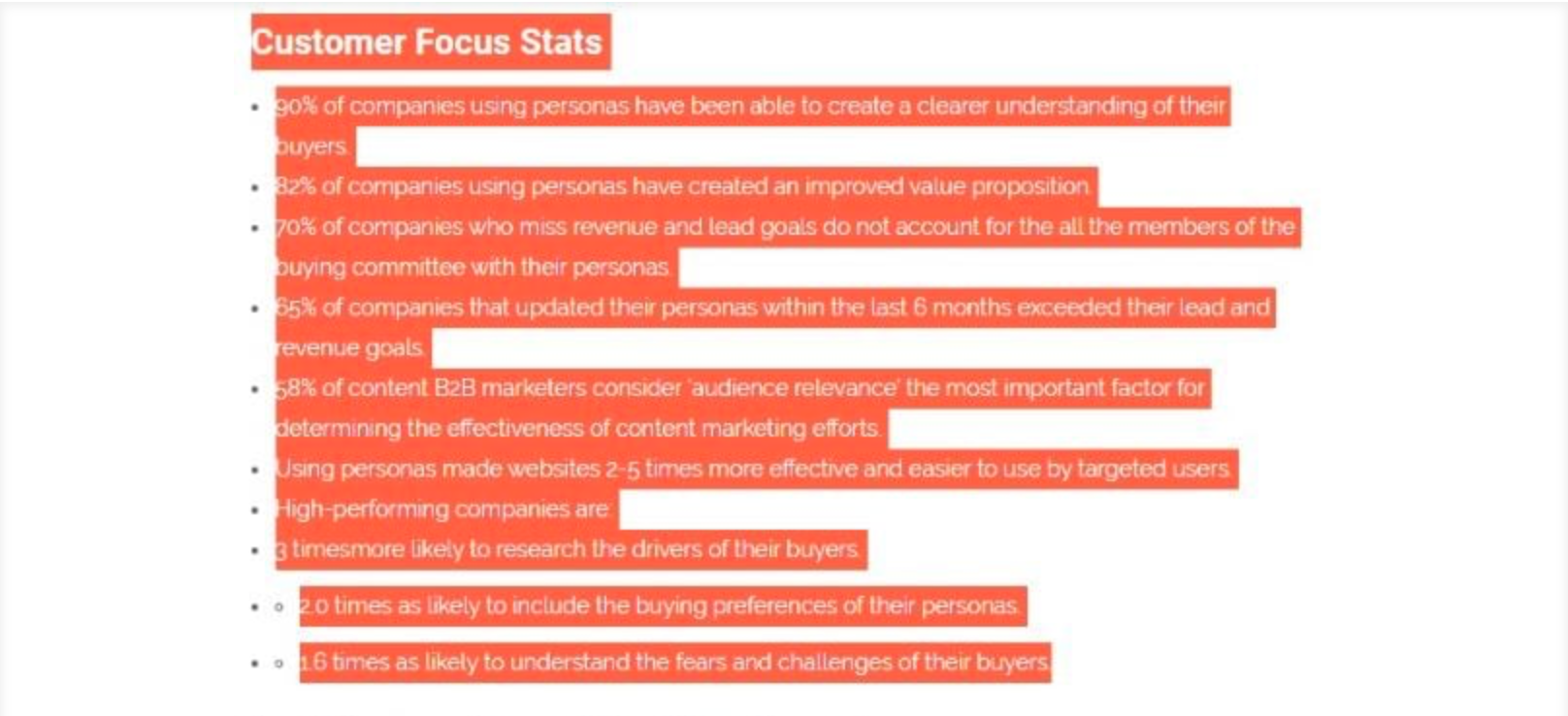
Typical customer personas capture demographics (age, gender, location, occupation) and psychographics (preferences, likes, dislikes, pain points). With this, you can more accurately predict customer search behavior and intent, then create matching content around the keywords they use to search. Include this in your content marketing tactics.
2. Map Out Your Typical Customer Journey
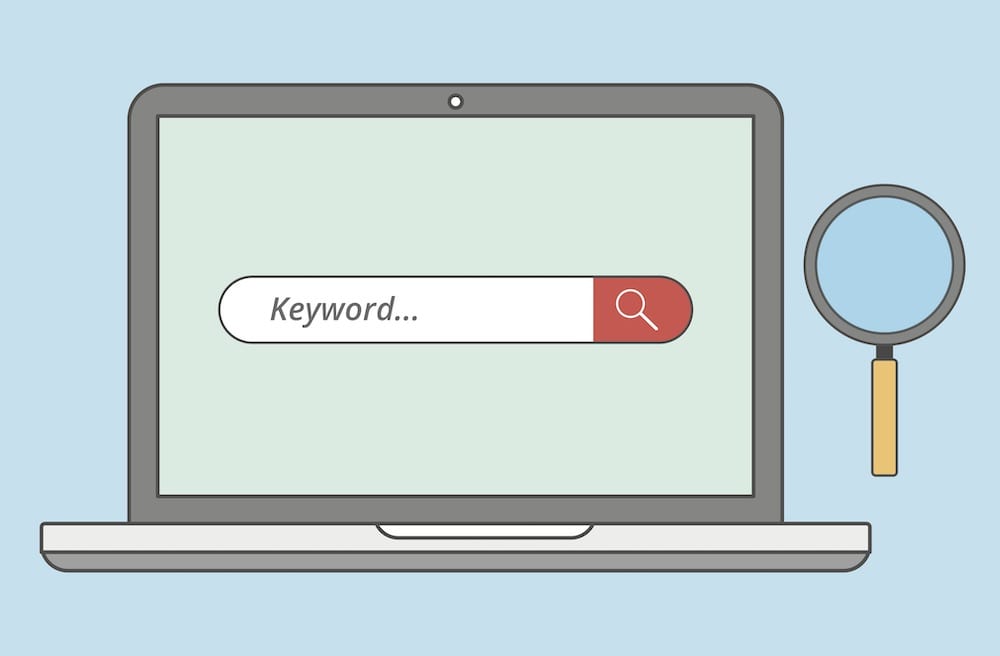 Each customer’s path to purchase is unique and doesn’t always follow a linear path. The same goes for search behavior. It is important to map out this path as it relates to search intent before creating content.
Each customer’s path to purchase is unique and doesn’t always follow a linear path. The same goes for search behavior. It is important to map out this path as it relates to search intent before creating content.
Online shoppers’ customer journey differs from brick n’ mortar shoppers which differ from real estate buyers. By mapping out your typical customer journey you’ll walk in their shoes and better understand their unique pain points as opposed to what you assume.
This way you can predict their search behavior including search intent, and create custom content for each step of their customer journey. Reports show that customer journey mapping boosts marketing ROI by up to 54%.
3. Think like a Customer
The essence of creating customer personas and customer journey maps is to help you understand and think more like your customer. Sadly, customers are “selfish” and only care about returns on spending. And customer satisfaction is key to customer retention.
On the other hand, most startup founders are more passionate about their products/solutions than they are about their customers. The result is shoddy service and dissatisfied customers. To avoid making this mistake, content marketers must learn to think like the customer.
What are your customers likely to be searching for now, what keywords or hashtags are trending, how do they prefer to pay? These can give you insight into their search intents and help you create content matching them.
4. Talk to Your Customers
 Gartner predicted that by 2020 customer experience will be the leading brand differentiator. Brands that excel at customer service thrive on feedback. Machine learning, predictive analysis, website analytics, customer personas, and customer journey maps can tell us a lot about our customers.
Gartner predicted that by 2020 customer experience will be the leading brand differentiator. Brands that excel at customer service thrive on feedback. Machine learning, predictive analysis, website analytics, customer personas, and customer journey maps can tell us a lot about our customers.
But none can tell us more about our customers than the customers themselves. By engaging and listening to your customers you gain first-hand insight into their fears, dreams, hopes, pains, wants, needs, etc.
We can also learn what drives their search behavior and create matching content. Reports show that brands who prioritize custom content are loved by 70% of customers, who view them as interested in building relationships.
5. Understand (Types of) Search Intent
As mentioned above, there are four types of search intent viz: informational, navigational, commercial, and transactional. Understanding them is critical and central to your content marketing efforts.
It can provide a new direction for your entire content marketing strategy. By focusing on these four search intents, you can create content for each stage of customer interaction with your brand.
Since search intent varies and sometimes overlaps, creating relevant content for each can help your customers along their journey from seeking information to completing the transaction. It also helps you provide a holistic search experience for your customers.
6. Audit and Optimize Existing Content for Search Intent
Content marketers or businesses looking to improve content marketing ROI are already invested in content marketing. Content creation takes time, hence, it may not be entirely practical to trash all your existing content.
However, it is important to review and audit your current content and optimize them for search intent. Perhaps some of your old content already rank, tweaking them with user intent in mind can produce impressive results.
Brian Dean used this technique to uprank his article from Google page two to number two, page one for the keyword “SEO strategy”. By auditing and optimizing existing content for search intent you can also increase organic traffic by over 106%.
7. Create Content Matching Each Intent Type
Search is both intent and content-driven. At one end of the spectrum is intent and at the other end is content. By understanding user intent, we understand what type of intent-matching content to create. Content marketers who know this, know how to match content with search intent.
 As we know, there are four types of user intent viz: informational, navigational, commercial, and transactional. In order to create content matching these, content marketers must start creating content that is informational, navigational, commercial, and transactional.
As we know, there are four types of user intent viz: informational, navigational, commercial, and transactional. In order to create content matching these, content marketers must start creating content that is informational, navigational, commercial, and transactional.
This increases your chances of catching and matching search or user intent and closing the sale. If you’re among the 57% of content marketers who cite custom content as the top priority, then this is for you.
8. Pay Attention to Google’s Search Bar
As of 2019 Google accounted for over 75% of global desktop search traffic followed by Bing (9.97%), Baidu (9.34%), and Yahoo (2.77%). With over 100, 000, 000 GB of indexed pages and trillions of searches performed annually, Google is an authority in search.
When executing or typing queries into Google search bar, there’s an autosuggest/autocomplete feature that tries to predict your search intent and complete your query. It also displays a list of other popular search terms.
Also, after your result returns, pay attention to the SERP. Are there ads, blog posts, videos, reviews, product pages? Those results hint at the user intent of those who’ve searched before you. You can create similar content.
9. Explore “People Also Ask” and Below the Fold
Google search bar is where the majority of searchers head to as highlighted above. However, another user intent goldmine on Google SERP is the “people also ask” section, usually located below the first result. Based on user intent, Google displays similar search terms people ask.
These results are typically three to four with a caret that displays more information as you hover. The number of “people also ask” suggestions quickly increases as you click on the carets.
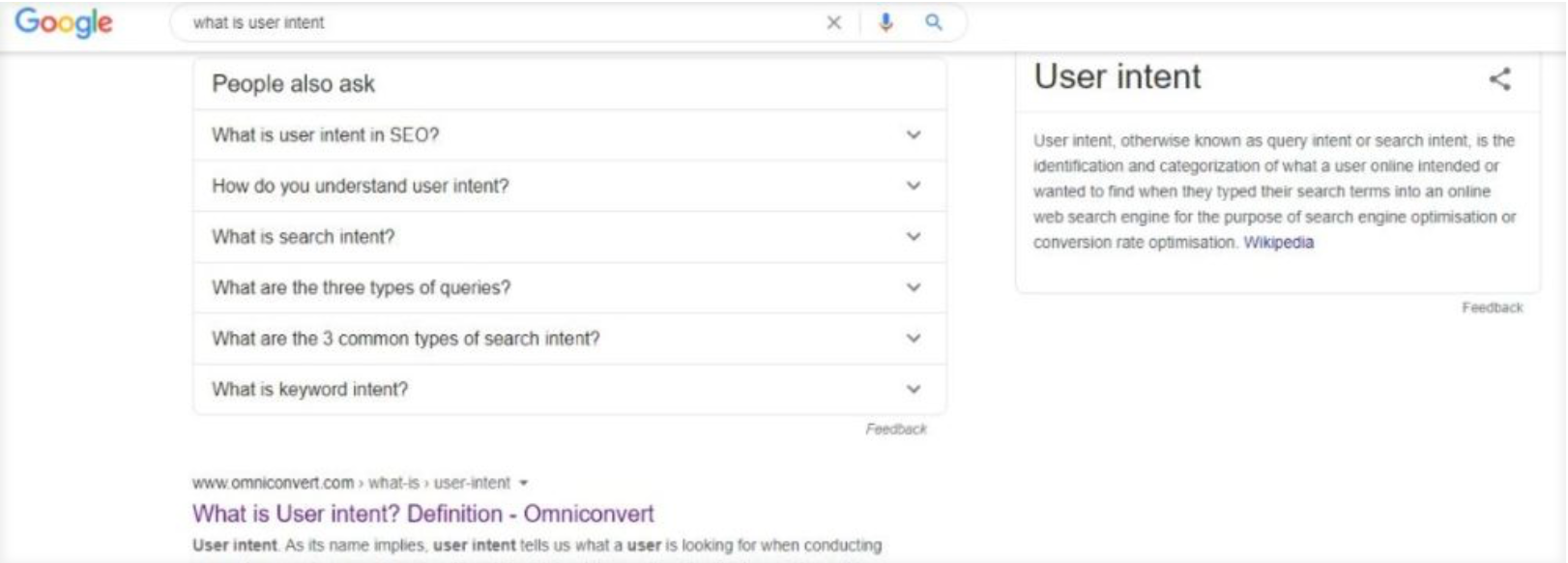
The “searches related to” section below the fold is also worth consulting when you want to create content to match search intent.
10. Train or Hire Professional Content Marketers
Content creation goes beyond creating random 1, 000-word blog posts. Brands should ensure that their content marketing teams understand and consider search intent when creating content. Google now considers relevance as a key ranking factor.
Brands can also hire professional freelance content marketers. Professional content marketers help brands, startups, and businesses create, implement, and manage their content strategy by ensuring that search intent reflects ìn each content piece.
This is the key to creating relevant content for lead generation, nurturing, and conversion. Google reports that 53% of buyers now research online before purchase. With the right intent-optimized content, you can seal the sale.
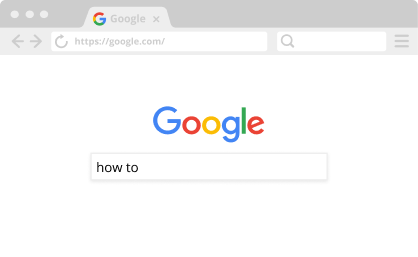
Also read:
- Future Giants: GAMEE – Redefining Gaming with Web3 and TON
- What is The Level of Difficulty of JIRA Certification?
- Horror Film ‘Weapons’ Earns 100% Fresh Rating on Rotten Tomatoes, Directed by Zach Cregger
Concluding a content strategy to match users' search intent
Content-intent mismatch is costly to your business and search reputation. Create more relevant intent-optimized content by experimenting with one or two of the above-mentioned ways we listed. You can always do A/B tests every now and then to try different strategies at different periods of time. Then you can quantify the results each strategy delivers.
Thank you!
Subscribe to our newsletter! Join us on social networks!
See you!

